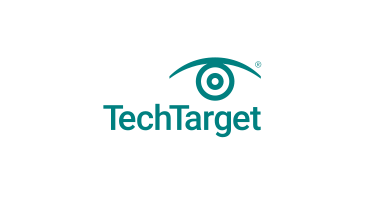Email Spam Overview
Email spam, commonly known as junk email, refers to unsolicited messages sent in bulk to a wide range of recipients. While humans are involved in spamming, it is largely carried out by botnets—networks of computers infected with malware and controlled by a single entity, known as a bot herder. In addition to emails, spam can also be disseminated through text messages and social media platforms.
As of 2023, daily email volumes were estimated at around 350 billion, with nearly half classified as spam. This issue costs legitimate individuals and businesses billions of dollars annually. Many users find spam frustrating and view it as an unavoidable aspect of using email. However, if not effectively filtered and managed, it can clutter inboxes, waste time, consume IT resources, and even pose security risks.
Spammers often adapt their tactics and messages to deceive targets into downloading malware, sharing sensitive information, or sending money. Most spam messages have a commercial focus, including attempts to gather personal data like bank and credit card details, promote dubious products, and make false claims.
There’s a common misconception that “spam” is an acronym for “stupid pointless annoying malware,” but the term actually originates from a famous sketch on Monty Python’s Flying Circus that humorously featured the canned meat product Spam.
The Mechanics of Spam
Spammers utilize spambots to scour the internet for email addresses, allowing them to create extensive mailing lists for sending junk emails—often to hundreds of thousands of recipients simultaneously. Common spam topics include pharmaceuticals, adult content, financial services, online degrees, work-from-home schemes, gambling, and cryptocurrencies. Despite a low conversion rate, spammers can still profit significantly due to the sheer volume of messages.
Botnets play a crucial role not only in sending email spam but also in executing click fraud schemes and generating malicious traffic for DDoS attacks.
A Look Back: The History of Spam
Spam has a long history, dating back decades. The first known spam email was sent by Gary Thuerk of Digital Equipment Corp. to promote a product, reaching about 400 users on the ARPANET, which generated approximately $12 million in sales. However, the term “spam” itself wasn’t coined until 1993, during an incident on Usenet involving an automatic posting glitch. By 1994, Usenet experienced its first significant spam attack.
By 2003, spam accounted for 80-85% of all global email communications, leading the U.S. to enact the CAN-SPAM Act, which remains a crucial regulation for legitimate email marketers.
Common Techniques Employed by Spammers
Spammers deploy various techniques, including:
- Botnets: Used to manage command-and-control servers that harvest email addresses and distribute spam.
- Snowshoe Spam: Involves using numerous IP and email addresses with neutral reputations to spread spam.
- Blank Email Spam: Sends emails with no content, potentially designed to validate email addresses or hide malicious code.
- Image Spam: Converts text into image formats to evade detection from text-based spam filters.
Types of Spam
Spam manifests in many forms, depending on the intent of the spammer:
- Marketing Messages: Unsolicited promotions for illegal or unwanted products/services.
- Malware Messages: Emails containing malicious software aimed at data theft or fraud.
- Fraud and Scams: Offers that require advance payment, often resulting in loss without reward.
- Antivirus Warnings: Fake alerts about non-existent infections, urging users to click phishing links.
- Sweepstakes Wins: Claims of prize winnings that require action via a malicious link.
- Adult Content: Significant spam content comes from dating or adult sites.
- Phishing Messages: Deceptive emails designed to steal personal or confidential data.
Spam vs. Phishing
Phishing involves fake communications that appear to be from legitimate organizations, aiming to deceive the recipient into providing sensitive information. Unlike typical spam, phishing emails require greater sophistication and often mimic official communications from banks or government agencies. It’s critical for businesses to train employees to recognize these threats.
Anti-Spam Legislation
Several countries have instituted anti-spam laws, in addition to the U.S. CAN-SPAM Act, including:
- Australia: Spam Act 2003
- United Kingdom: Privacy and Electronic Communications Regulations 2003
- Canada: Multiple laws addressing online spam since 2000
- European Union: Directive on privacy and electronic communications of 2002
Combating Spam
Email providers such as Microsoft and Google invest heavily in enhancing email security. Major corporations also allocate significant resources to protect against phishing and cyberattacks.
Email filters are essential tools, moving spam to designated folders to help users manage unwanted messages more effectively. Although no system can entirely eliminate spam, users can take proactive measures:
- Recognize suspicious emails by checking sender addresses.
- Report, block, and delete unwanted messages.
- Unsubscribe from unwanted mailing lists.
- Install anti-spam software.
- Utilize third-party filters in local email clients.
- Ensure browser protection against malicious sites.
- Create allowlists for trusted senders.
- Use disposable or masked email addresses for online activities.
- Avoid clicking on links or attachments from unknown sources.
Ensuring Legitimate Emails Aren’t Misidentified as Spam
Email marketers can follow best practices to ensure their messages aren’t misclassified as spam:
- Maintain a strong sender reputation.
- Utilize authentication measures like DomainKeys Identified Mail.
- Avoid spam-triggering keywords in emails.
- Create relevant and engaging content for recipients.
- Use attention-grabbing subject lines.
- Obtain opt-in confirmations from recipients.
- Partner with reputable bulk email services.
Reporting Spam: Worthwhile Action
Yes, reporting spam is important. While it may be impossible to eliminate spam entirely, reporting it helps improve filtering systems. Most email services like Outlook, Gmail, and Apple Mail offer simple options for users to report spam, such as right-clicking the suspicious email and selecting the appropriate reporting option. This functionality is also available on mobile devices.









